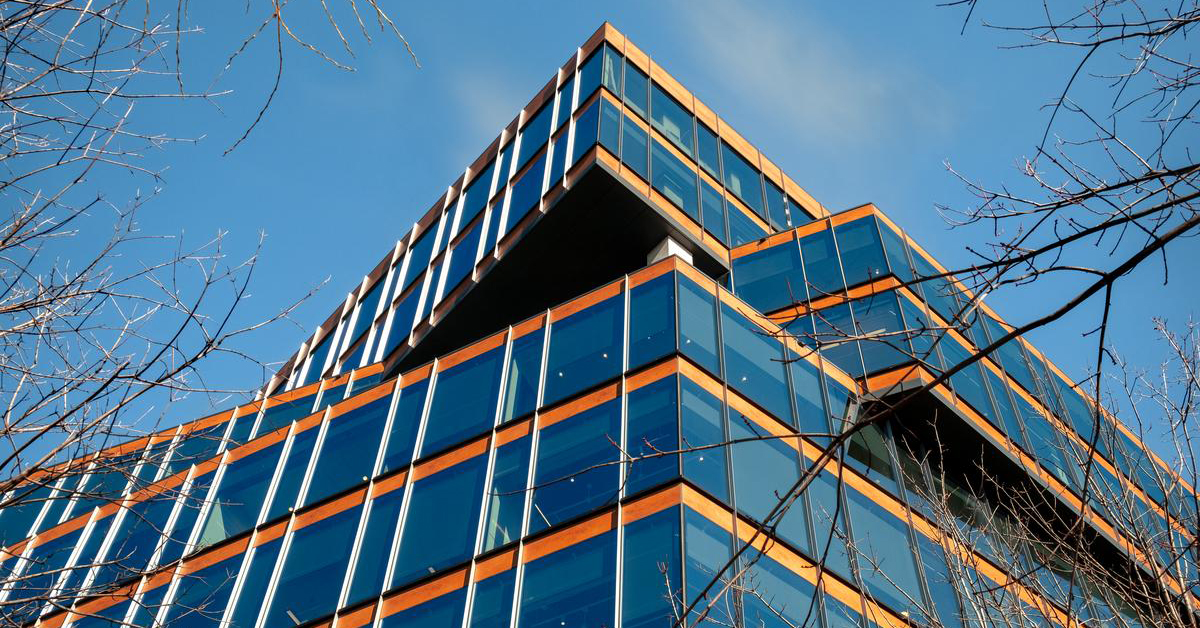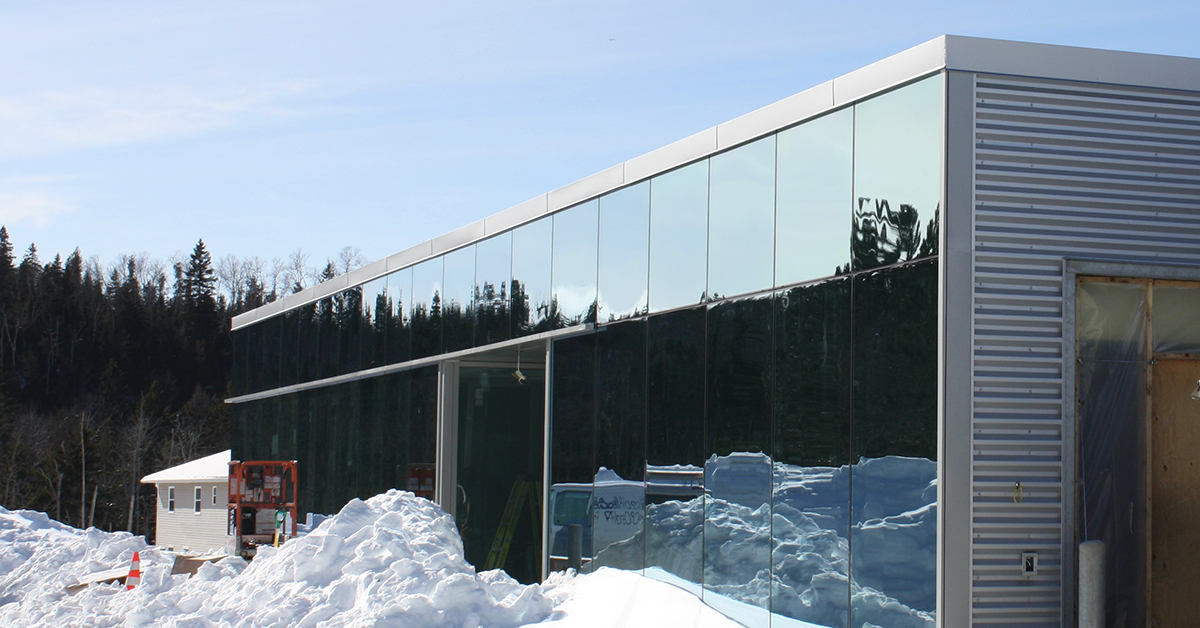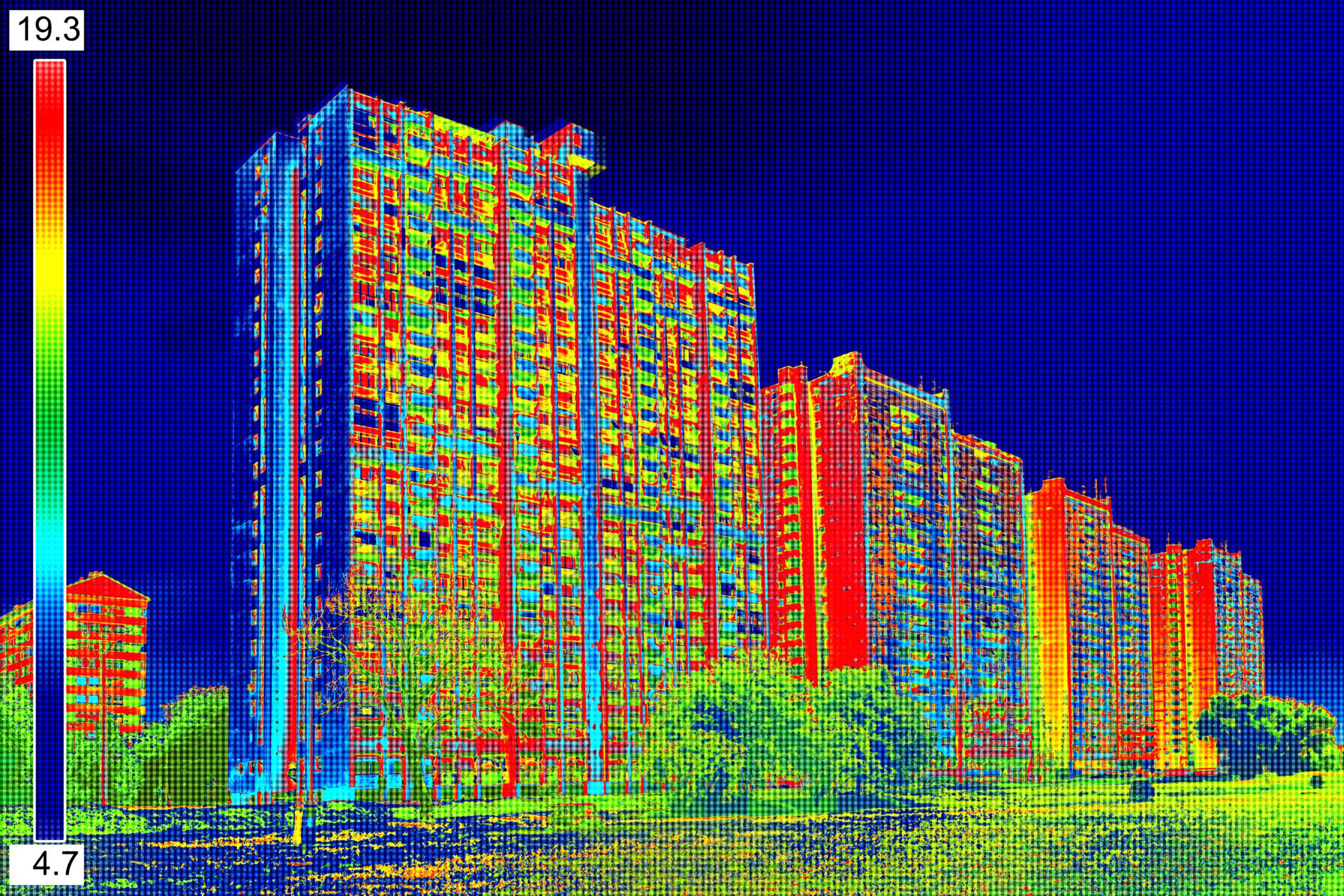News & Insights
Building science: creating resilience in harsh environments
Buildings in harsh environments face risks like extreme temperatures, high winds and rain, corrosive exposure, and seismic activity. Building science offers solutions to address these challenges.

Building failures produce tragic results, and buildings in harsh climates are especially at risk.
From extreme temperatures and humidity to high winds, heavy precipitation, exposure to corrosion environment and seismic activity, elements can cause structural damage, increase energy consumption, and compromise indoor air quality.
Salas O’Brien’s building science experts understand the physical behavior of buildings and their components as well as the interactions between buildings and the environment. This article explores the key challenges that buildings face in harsh environments, the role of building science in addressing them, and successful strategies owners can use to create resilience.

What are the key challenges that buildings face in harsh environments and how can building science address them?
Harsh environments pose numerous challenges to the durability and efficiency of buildings, including:
Extreme temperature differences
Harsh environments may experience large fluctuations in temperature, putting stress on building materials and mechanical systems. This can lead to the expansion and contraction of materials, causing cracks and leaks. A thermal bridge at the building’s envelope can cause extreme loss of heat or cool air, increasing energy consumption to maintain comfortable indoor temperatures.
Building science can identify the appropriate insulation, glazing, ventilation, and other building envelope strategies to address these challenges and maintain energy efficiency. For example, passive solar design uses natural light and heat to warm a building in cold climates, while reflective roof coatings can reduce heat gain in hot climates.
High humidity and precipitation
Buildings located in humid or rainy environments are at risk of mold growth, moisture damage, and corrosion.
An effective building envelope with a vapor barrier can provide resistance to moisture and wind-driven rain. Building science will consider the specific climate and site conditions and can identify the most appropriate materials and assembly methods to achieve these goals. Additionally, improved ventilation and dehumidification systems can maintain healthy indoor air quality and prevent moisture buildup.
Strong winds
Buildings in windy environments or in hurricane zones are at risk of structural damage, air infiltration, and heat loss.
Building science can identify appropriate envelope and mechanical system design strategies to address these challenges. For example, wind-resistant roofing systems, storm shutters, and sealants can protect against wind-driven rain and debris. Additionally, mechanical systems such as HVAC and air sealing can prevent air infiltration and exfiltration, reducing energy consumption and maintaining comfortable indoor conditions.
Seismic activity
Buildings located in earthquake-prone areas must be designed to resist seismic forces and remain standing in the event of an earthquake.
Building science can identify appropriate structural engineering and retrofitting strategies to achieve this goal. For example, using steel frames, reinforced concrete, and base isolation systems can improve a building’s seismic resistance.
Corrosive elements
Buildings located near the coast or cold weather environment that require using salt for de-icing or other corrosive environments are at risk of damage from salt, sand, and other elements which put the structure in danger.
Buildings in these areas can make use of protective paints, waterproofing, add corrosion inhibitors to concrete, or leverage stainless steel or galvanized steel for exposed building elements. Regular cleaning and maintenance strategies can prevent the buildup of corrosive materials.
UV radiation
Buildings located in areas with high UV radiation are at risk of fading and degradation of materials, particularly in exterior elements such as siding, roofing, and windows.
Building science can identify appropriate materials and design strategies to address these challenges. For example, using UV-resistant coatings, shading devices, and tinted windows can protect against UV radiation and maintain the building’s appearance and function.
How can building science be applied to ensure resilience?
When a new building is in development, professional engineers can evaluate the building’s location and environmental challenges and provide design services based on their findings. Salas O’Brien works with the client and design team to provide building envelope design, structural design, roofing and waterproofing, cladding and façade selection, seismic design, and other services to maximize safety and longevity for the building. We can help the client understand the special needs of their context and the requirements of the building code.
For existing buildings, Salas O’Brien provides condition reviews with appropriate solutions. We assess damage and deterioration through investigation, sampling, and non-destructive testing, and then develop appropriate solutions. Our solutions include providing design, specifications, tendering, and contract administration.
What role do building condition assessments play in protecting the interests of building owners?
Building condition assessments are a critical component of building science, particularly for existing buildings.
These assessments evaluate the current condition of a building and identify any deficiencies or potential risks. They result in a plan for building maintenance along with the budget needed to maintain the building. They can also help owners determine their spending priorities and evaluate what can be deferred and implemented over time.
Building condition assessments also help buildings stay up to date with the building code and municipality bylaws to ensure a safe environment for residents and reduce liabilities.
By conducting regular assessments, building owners can proactively address any issues and keep their structures in good condition. This helps to protect owners’ interests by preventing costly repairs and ensuring the building’s longevity.

Examples of successful building science strategies in harsh climates
Hurricane-resistant construction
After Hurricane Andrew devastated parts of Florida in 1992, building codes were revised to require hurricane-resistant construction in high-risk areas. Using techniques such as reinforced concrete walls and roofs, impact-resistant windows, and hurricane straps to secure roofs to the walls, buildings in these areas are now designed to withstand winds of up to 150 mph.
Key factors contributing to their success include strict building codes, adherence to building codes during construction, and continuous education of builders and designers on new technologies and techniques.
Corrosion resistance
For new structures that are exposed to cold-climate corrosion in the form of salt used for de-icing, use waterproofing to protect the concrete and use of corrosion inhibitors in concrete or stainless-steel building elements resists corrosion and leads to a longer building life expectancy. For existing reinforced concrete that has already started corroding, the use of techniques such as cathodic protections can slow down or reduce further corrosion.
Key factors include using materials that resist corrosion, proper workmanship, and awareness of new innovations to reduce corrosion effects.
Passive solar buildings in cold climates
Passive solar building design uses the natural heat from the sun to heat buildings in cold climates, reducing the need for mechanical heating systems. These buildings use design features such as south-facing windows, thermal mass, and insulation to capture and store solar heat.
Key factors contributing to their success include careful building orientation, proper sizing and placement of windows, and the use of high-quality insulation and thermal mass.
Green roofs in urban environments
Green roofs are vegetation-covered roofs that provide a range of benefits, including reduced stormwater runoff, improved air quality, and reduced urban heat island effect. These roofs are typically designed with layers of soil and vegetation and can be installed on a range of building types from residential to commercial.
Key factors contributing to their success include careful plant selection, proper irrigation and drainage, and integration with other building systems, such as rainwater harvesting systems.
Snow-resistant roofs
In areas with heavy snowfall, the weight of the snow can pose a serious threat to the structural integrity of buildings. Snow-resistant roofs are designed to prevent the accumulation of snow and ice by using steep slopes, special roofing materials, and heating systems. For example, some roofs are constructed with a steep pitch that allows snow to slide off, while others use materials that prevent ice dams from forming.
Key factors contributing to their success include proper design and construction techniques, regular maintenance, and use of appropriate materials.
Earthquake-resistant construction
Earthquakes can cause severe damage to buildings and infrastructure in certain regions, particularly in seismic zones. In the event of an earthquake, earthquake-resistant construction techniques are designed to minimize damage and ensure the safety of occupants. This can include using flexible materials that absorb shock, strengthening foundations and structural elements, and incorporating seismic isolation systems.
Key factors contributing to their success include adherence to building codes and regulations, rigorous testing and quality control, and ongoing research and innovation to improve earthquake-resistant design.
Checklist for building owners who want to be proactive in mitigating risk
For buildings located in harsh environments, owners can mitigate risk through the following steps:
- Commission a building condition assessment by a professional team every 5 years to identify any problems that the building may have developed.
- Develop a maintenance plan based on the reports and do the repairs required to ensure the building’s performance.
- Keep the building up to date with building codes and local municipality bylaws to ensure a safe environment for residents and reduce liabilities.
- Develop a relationship with a professional engineering firm to stay informed about new developments and technologies in building science to ensure that the building is up-to-date and resilient.
Building science plays a critical role in creating resilience in harsh environments. By considering the specific challenges of each environment and applying appropriate strategies, buildings can withstand extreme temperatures, high winds, heavy precipitation, seismic activity, and other hazards. Building science also helps protect the interests of building owners by keeping structures in good condition and reducing the risk of costly repairs and building failures.
For media inquiries on this article, reach out to Stacy Lake.

Mohsen Mansouri, PE
Mohsen Mansouri has more than 35 years of experience in the structural review, restoration, and design of a wide variety of structures, including commercial, residential and institutional facilities, parking garages, bridges, and other concrete projects. He also has significant experience in asset management, feasibility studies, small projects, sustainability consultation, and design services. Mohsen serves as a Principal at Salas O’Brien. Contact him at [email protected].